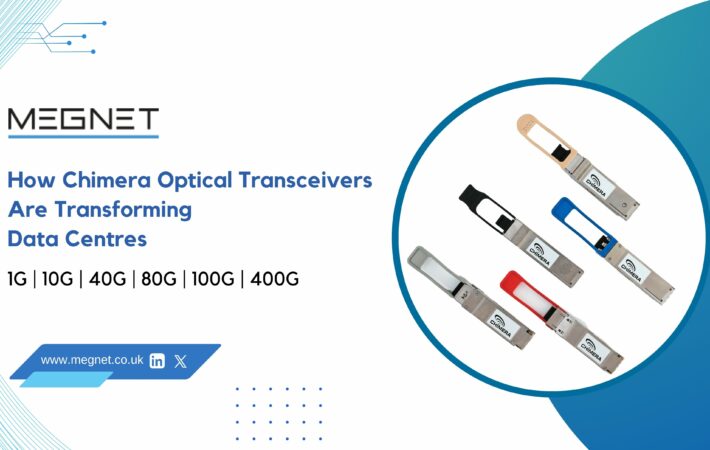Unleashing the Power of Fibre Optic Patch Leads
In the dynamic world of business, a robust and scalable network infrastructure is crucial for seamless operations and uninterrupted connectivity. At the heart of this infrastructure lie fibre optic patch leads, the unsung heroes that enable efficient data transmission and flexibility within networks. In this blog, we will delve deeper into the significance of fibre optic patch leads as the cornerstone of scalable and future-proof network solutions. From understanding the different types of fibre optic patch leads to identifying the best options available in the market, we will provide valuable insights to help businesses make well-informed decisions. Let’s embark on a journey through the world of fibre optic patch leads and unlock their true potential for your network needs.
The Significance of Fibre Optic Patch Leads:
Fibre optic patch leads, also known as fibre optic patch cables or jumper cables, are essential components of modern fibre optic networks. They establish the physical connection between networking devices, ensuring the smooth and reliable transfer of data over long distances.
Understanding the Different Types of Fibre Optic Patch Leads:
a) Single-Mode Patch Leads:
Single-mode fibre optic patch leads are designed for long-distance data transmission. They feature a smaller core size, enabling the transmission of a single light signal over extended distances. Single-mode patch leads are ideal for applications that require high bandwidth, such as long-range telecommunications and data center interconnectivity.
b) Multimode Patch Leads:
Multimode fibre optic patch leads, on the other hand, are used for shorter distance transmission within local area networks (LANs) and data centers. They feature a larger core size, allowing multiple light signals to travel simultaneously. Multimode patch leads provide cost-effective solutions for high-speed applications like Ethernet connections and contribute to the seamless operation of businesses.
Selecting the Best Fibre Optic Patch Leads:
a) Quality and Reliability:
When it comes to fibre optic patch leads, prioritizing quality and reliability is paramount. Opt for reputable brands known for adhering to industry standards and offering products with superior construction and performance. High-quality patch leads ensure minimal signal loss, reduced interference, and enhanced overall network stability.
b) Connectors and Compatibility:
Consider the connector types and compatibility of fibre optic patch leads with your existing network infrastructure. Common connector types include LC, SC, and ST. Choosing patch leads that are compatible with your network devices ensures a seamless and secure connection, minimizing potential disruptions.
c) Length and Flexibility:
Evaluate the required length of patch leads based on your specific network setup and layout. Consider factors such as cable management and ease of installation. Optimal length and flexibility not only facilitate efficient network organization but also provide room for future scalability and expansion.
Growing Demand for High-Speed Connectivity:
In today’s business landscape, the demand for high-speed connectivity continues to soar. With data-intensive applications, cloud services, and digital transformation initiatives becoming the norm, businesses are increasingly relying on fibre optic patch leads to meet their bandwidth requirements and ensure smooth data transmission.
Rapid Deployment of Fibre Optic Networks:
The deployment of fibre optic networks is expanding at an accelerated pace. Driven by the need for reliable and high-performance networking solutions, businesses are embracing fibre optic patch leads as integral components for faster data transfer, reduced latency, and enhanced network reliability.
The Future of Fibre Optic Patch Leads:
Experts foresee a bright future for fibre optic patch leads, characterized by ongoing advancements in higher data rates, improved performance, and enhanced durability. As businesses increasingly depend on high-speed connectivity and scalable network solutions, fibre optic patch leads will play a pivotal role in meeting these evolving requirements. Continued development in connector technology, cable design, and manufacturing processes will contribute to the evolution and innovation of fibre optic patch leads.
Buy Fibre optic patch leads as they serve as the backbone of scalable and future-proof network solutions. By understanding the types, prioritizing quality and compatibility, and keeping up with market trends, businesses can make informed decisions to unlock the full potential of their network infrastructure. Invest in the best fibre optic patch leads available to elevate your network scalability, speed, and reliability, and stay ahead in today’s competitive business landscape.
Discover our wide range of high-quality fibre optic patch leads and find the perfect solution for your network requirements. Visit our website or contact our team of experts today to explore the possibilities of seamless connectivity and unlock unparalleled performance for your business. Upgrade your network infrastructure with our reliable fibre optic patch leads and embrace the future of networking!
Want to know about our products?
FAQ's
Fibre offers superior bandwidth, meaning you can transmit more data at faster speeds. They also experience less signal interference and attenuation (weakening) over long distances, making them ideal for large networks.
Fibre patch leads Fibre patch leads allow for easy connection and reconfiguration of network components. As your network grows, you can simply add more patch leads to connect new devices without rewiring the entire system.
There are two main types: single-mode and multi-mode. Single-mode offers the highest speeds and longest distances, while multi-mode is better for shorter runs and lower costs.
Consider factors like distance, required bandwidth, and type of network (single-mode or multi-mode) when choosing your patch leads. Consulting a network specialist is recommended for complex setups.
While they require some care during installation, modern fibre optic cables are quite durable. They are less susceptible to damage from electromagnetic interference and bending than copper cables.
Common connector types include LC, SC, ST, and MPO. Each has its own advantages and is suited for different applications.
Proper cleaning and avoiding excessive bending are crucial. Patch leads should be secured with cable management tools to prevent strain.
Pre-terminated patch leads come with connectors already installed, saving installation time and ensuring quality terminations.
Regular inspection for dust or damage is recommended. Avoid touching the cable ends and use cleaning tools designed for fibre optics.










Leave a comment
Your email address will not be published. Required fields are marked *